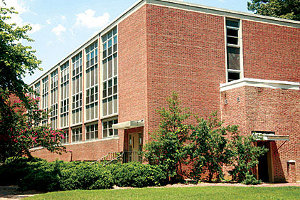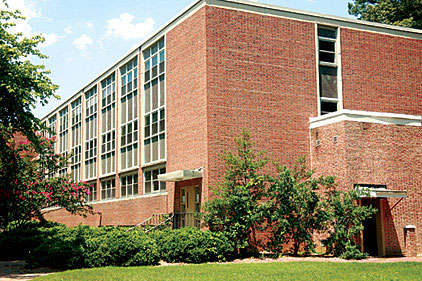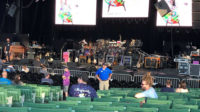When the Pina Bausch dance company came to the University of California (UC) Berkeley for a weekend of live performances presented by Cal Performances in December 2011, the theater’s production team faced an unusual challenge. The show incorporated a vintage 1940 slide projector being shipped from Germany for use in the Zellerbach Hall auditorium, and Doug Warrick, general manager of Cal Performances, had to find a way to ensure that noise and heat buildup from the projector would not ruin the performance or, worse yet, create a fire hazard in the theater.
A customized portable cooling solution from Atlas Sales & Rentals, Inc. (Fremont, CA) helped ensure that the show would go on — coolly, quietly and safely.

|
|
A temporary cooling system helped this theater protect valuable equipment and keep the audience safe and entertained. |
Cooling Takes Center Stage
Describing the challenge, Warrick says, “We had to position the projector in the seating area so that it could project images onto the dancers during the live performance. This was a large-format, 6,000-W piece of antique equipment designed for use with very valuable 12- x 12-in. hand-painted glass slides. It ran extremely hot and required a lot of fan power for cooling. So the main challenge was to remove seats from the theatre, install a manned projection booth, and find a way to keep it sufficiently quiet and cool.”
Based on a word-of-mouth referral, Warrick called on Atlas Sales & Rentals, a leading national distributor of portable air conditioning equipment, for assistance. Atlas did the mathematical calculations and determined that a 2-ton (24,000 Btuh) Office Pro® Model 24 portable cooler manufactured by MovinCool®/DENSO Sales California, Inc. would be a good fit from a standpoint of size and cooling capacity.
“This model delivers the cooling needed in a small footprint, which was important in view of the tight space constraints,” notes Jose Mota, a portable cooling specialist with the Atlas San Francisco office. The cooler had to be housed within an 8- x 8-ft manned booth, similar to the insulated sound booths used in recording studios but with customized cutouts in the walls to create a projection window and accommodate ductwork for the portable cooler.
Planning the temporary cooling with Warrick and his team, Atlas decided on nozzle kits to direct cold air directly onto the projector as it operated. Ducting the warm air exhaust was a challenge for Atlas.
“Blowing it onto the audience was not an option, so we removed one of the seats and ducted the warm air down to a return air plenum below the floor, using a special flange that attached to the floor,” explains Mota.
“We also needed to replenish the air in the booth,” Mota continues. “We accomplished this using two 6–in. diameter ducts fitted from outside to supply the booth with fresh air, which was forced in by two fans provided by the booth manufacturer. The fans were insulated and soundproofed to ensure that noise would not be a problem.”
Warrick noted that he worked with Atlas several weeks in advance to put the cooling plan in place.
“But when the projector arrived just a few days ahead of the performance and we started to run it, the area was overheating,” he says. “Atlas did a great job developing an on-the-spot solution to the problem.”
According to Atlas’ Mota, the plenum space below the floor was small, which caused some warm exhaust air to back up into the exhaust duct.
“We installed a HEPA filter fan unit (with the filter removed) in the plenum space to duct the air down to a larger practice room located on a subfloor below the plenum. We tried it out in rehearsal and everything worked well after we made that modification.” A fire inspector signed off on the system prior to the performances.
“Atlas did an outstanding job of analyzing the challenge, coming up with creative approaches and reacting quickly and effectively to iron out the bugs. We were very pleased with the service they provided — and so were the audience and the dancers,” Said Warrick, summing up the project,
The late Pina Bausch, whose company performed at Cal Performances many times, was for many years regarded as one of the most influential figures in modern dance, with original creations that combined movement with music, speech and visual imagery. Since Bausch’s death in 2009, her dance company has continued to perform internationally. ES






